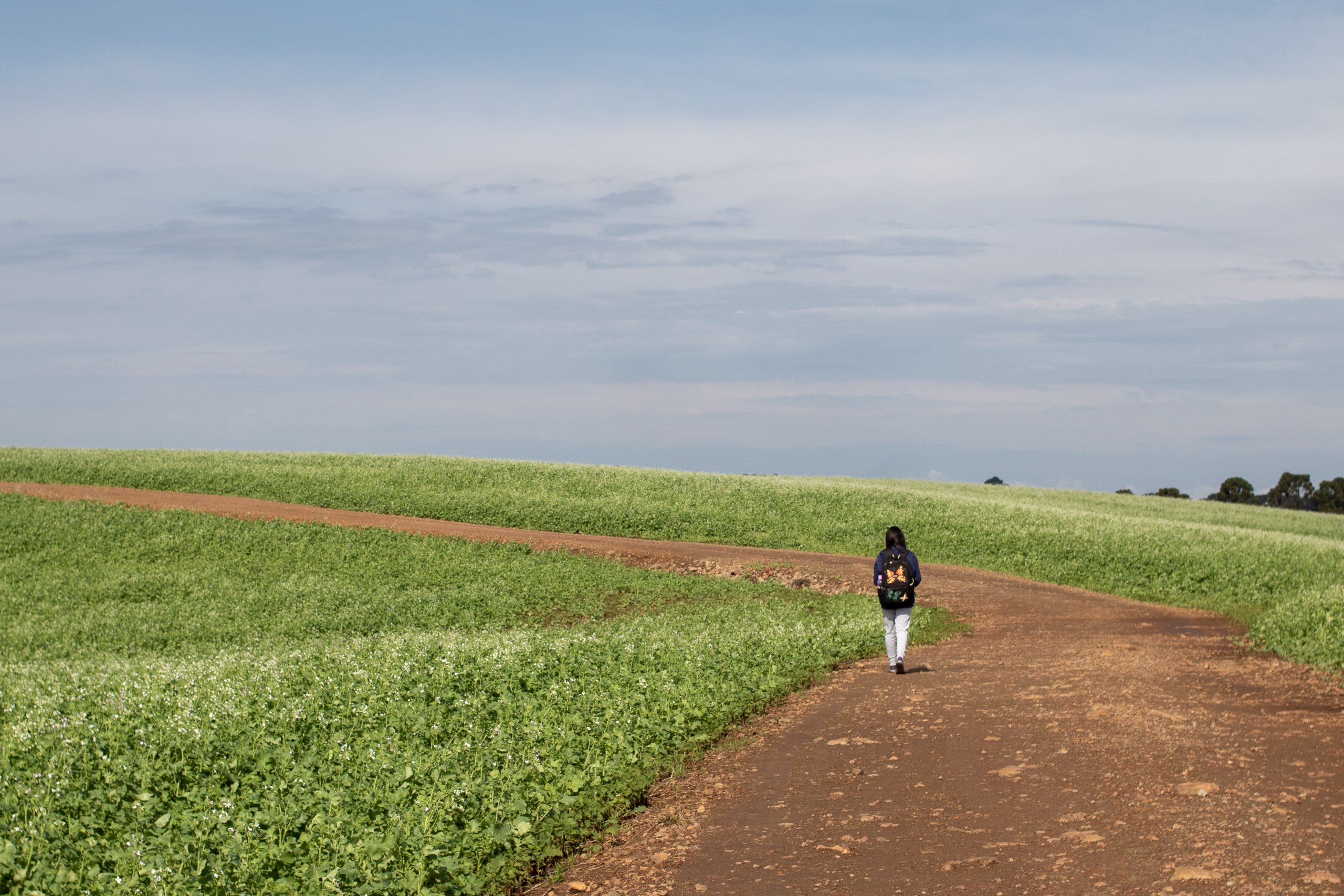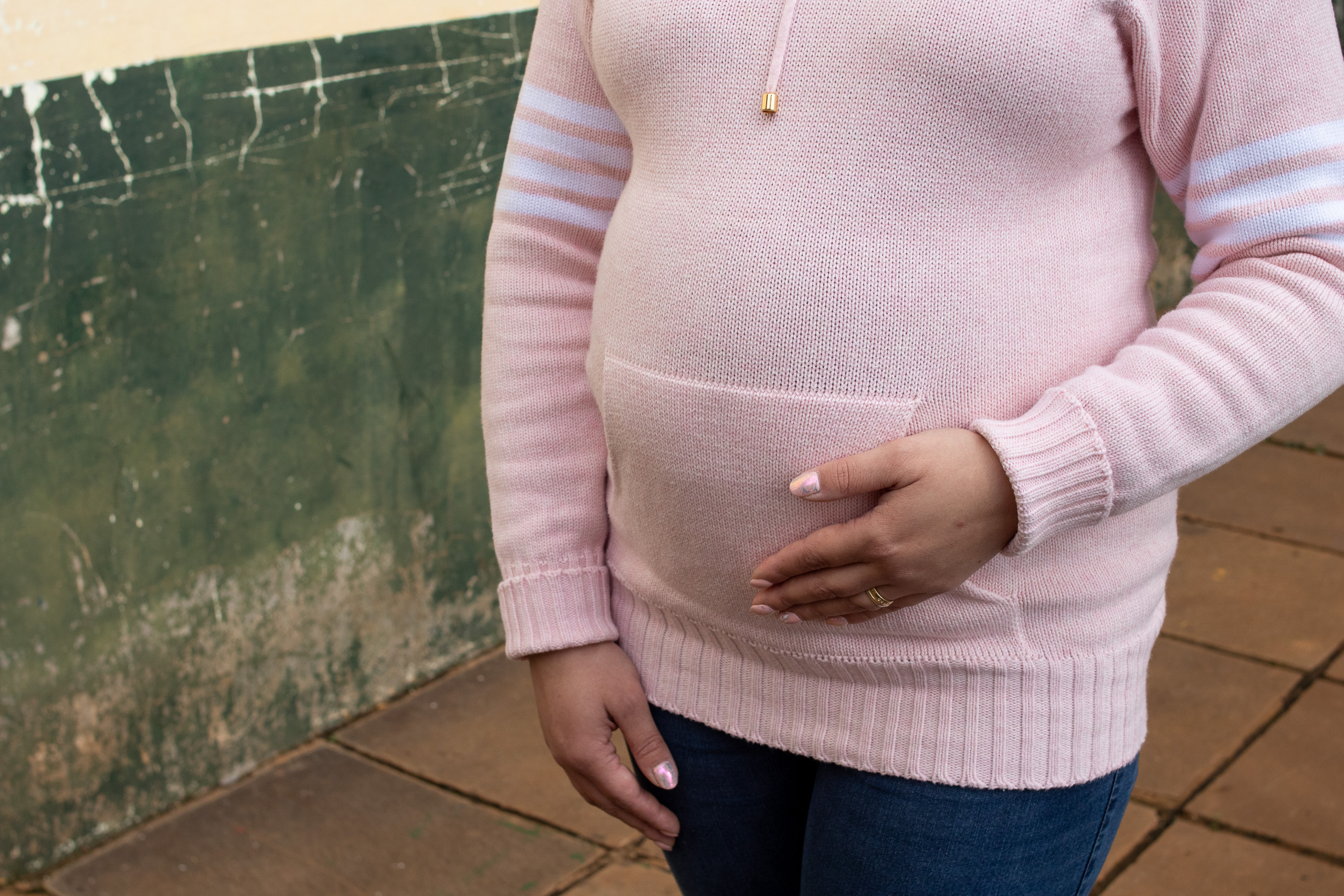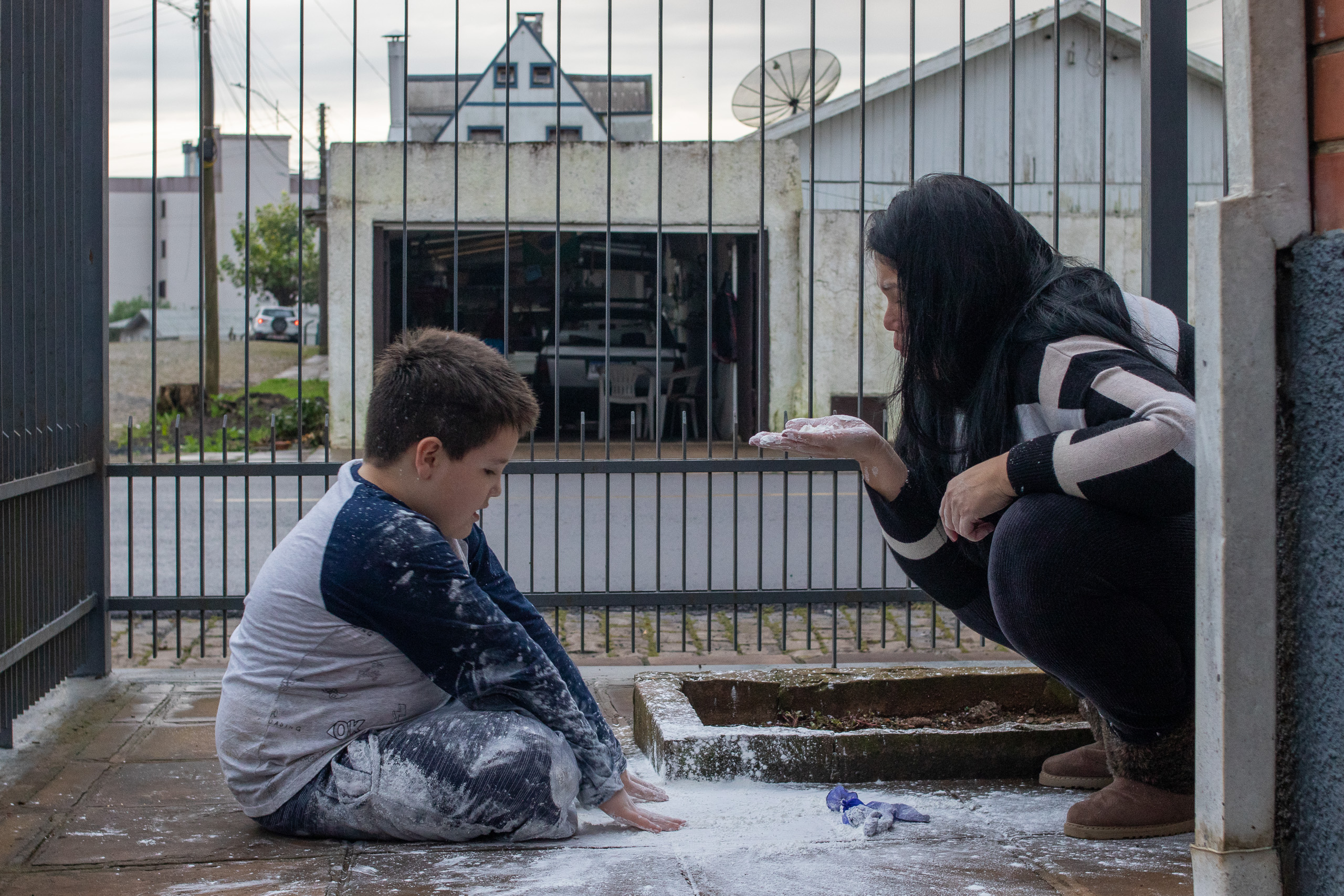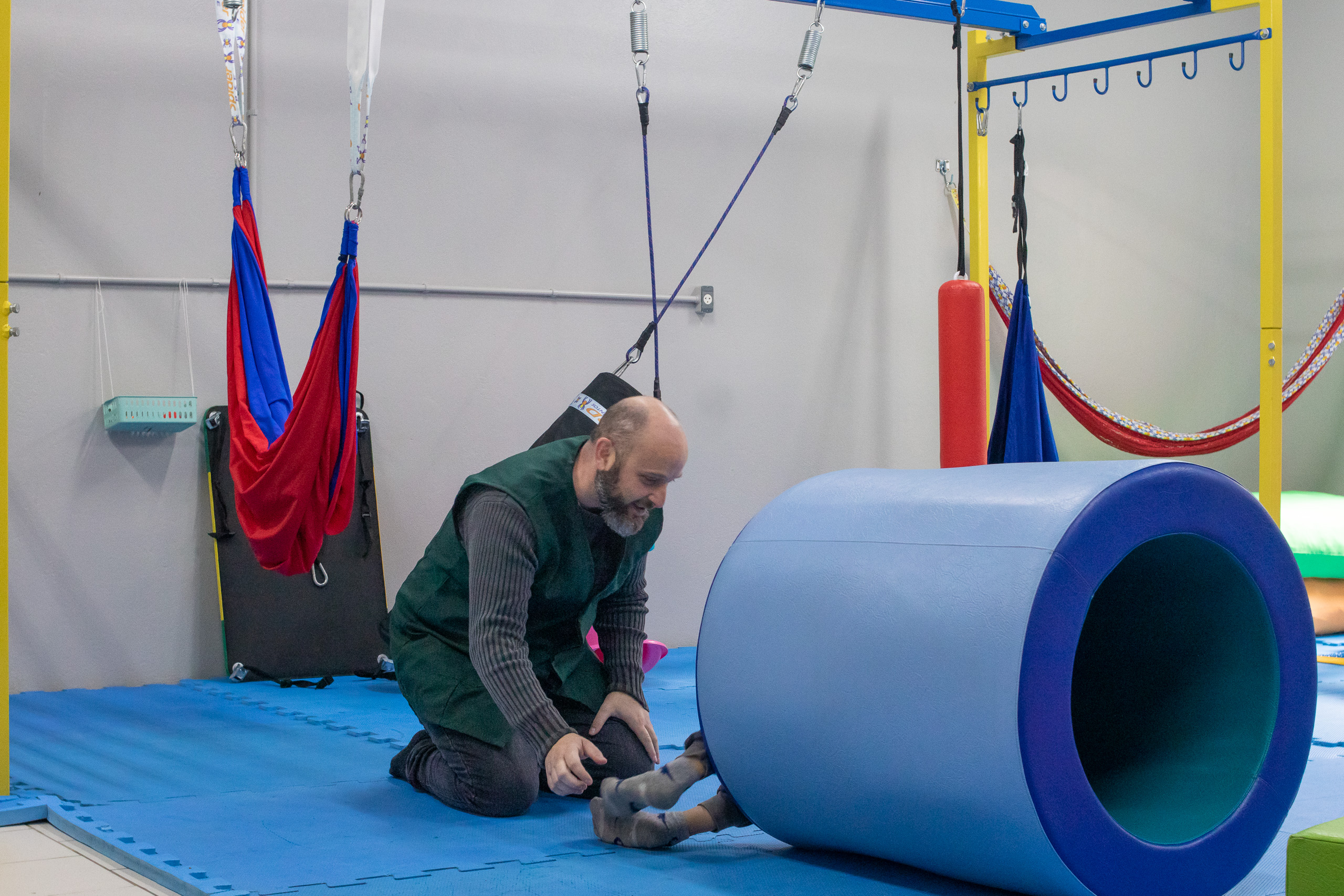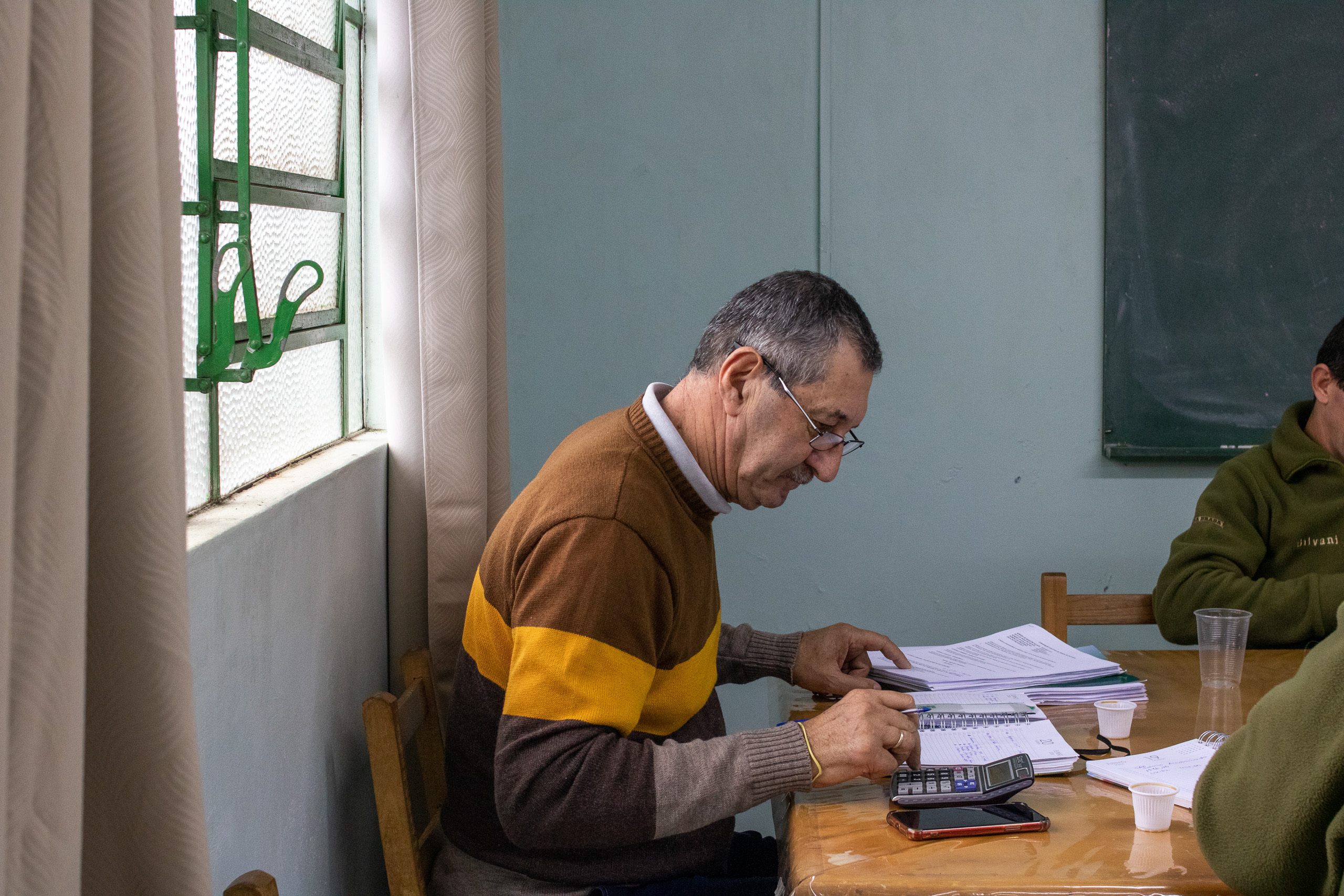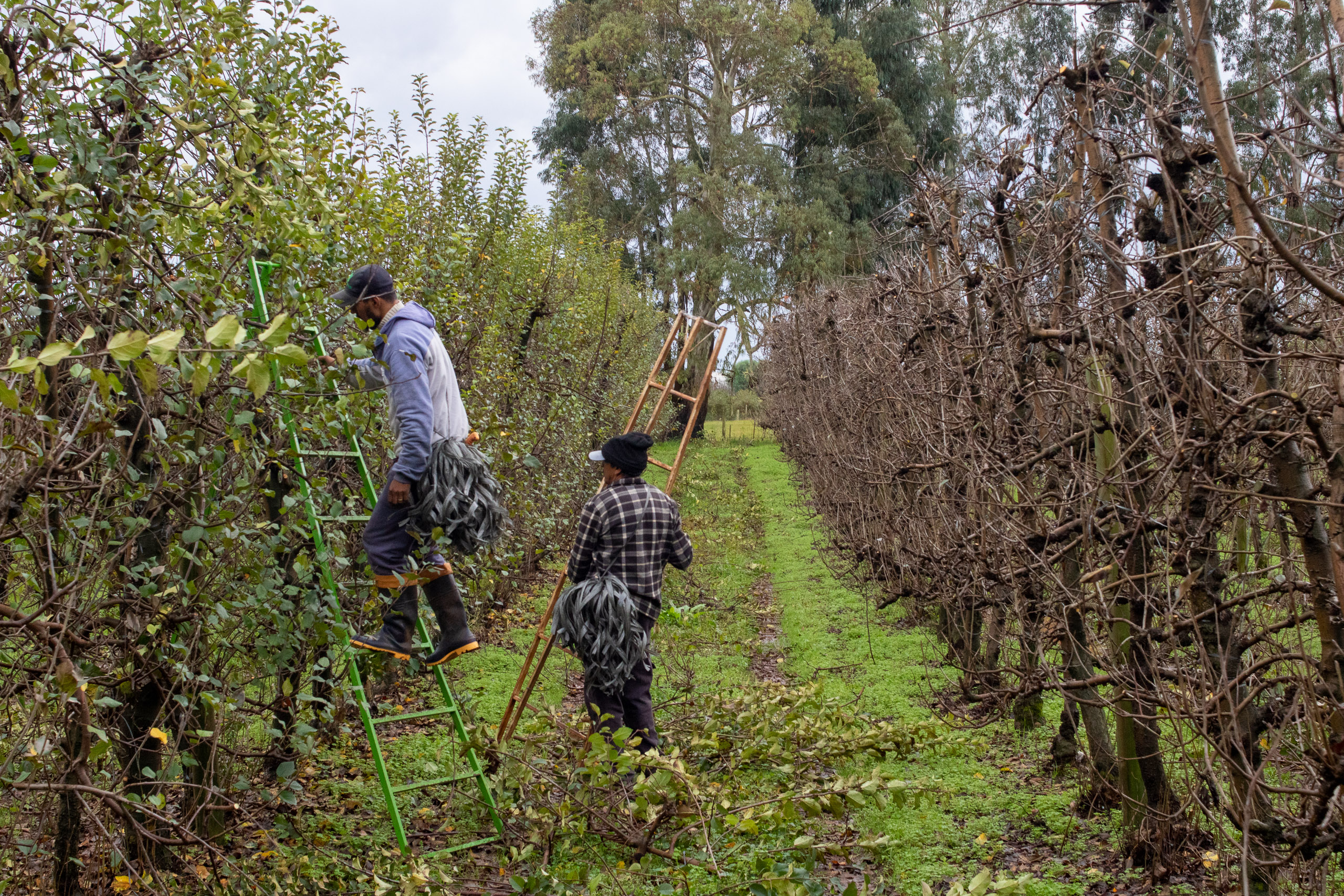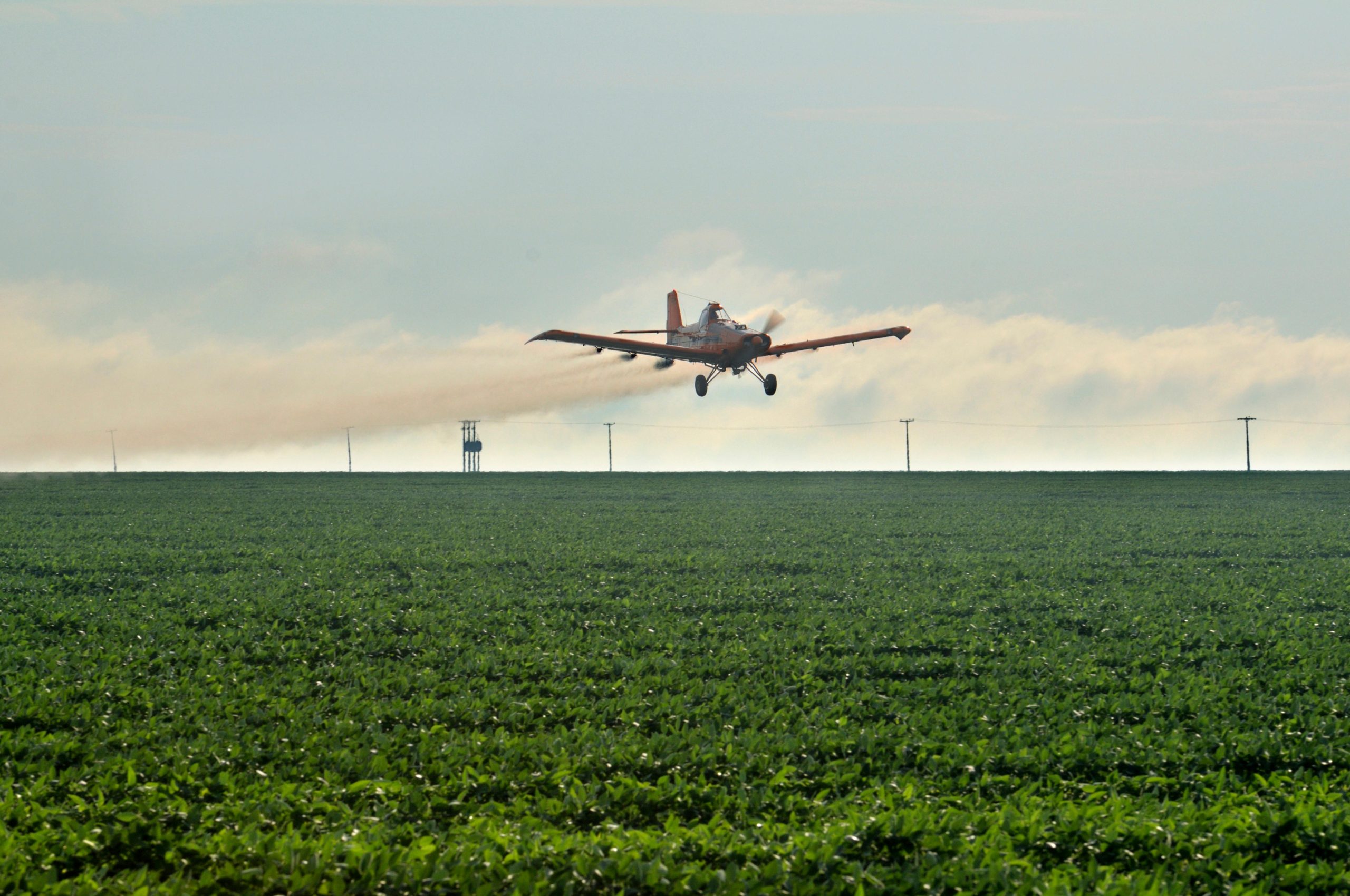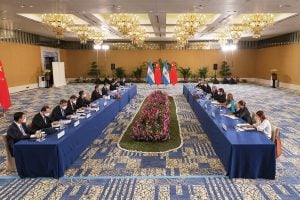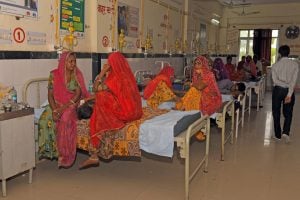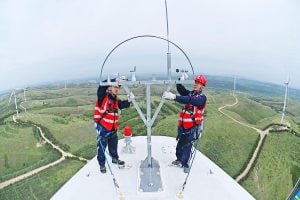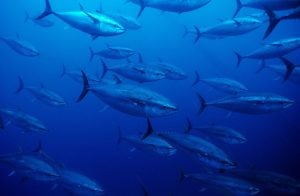Maria was born with a serious condition that limited her development in the years that followed. Though doctors worked fast to drain the excess fluid that had built up around her brain, a disorder known as hydrocephalus, they were unable to overcome the severe damage that the newborn had already sustained. Later, attempting to counter muscle damage in her little feet, young Maria would undergo other surgeries. But she would never walk, nor speak – and as she grew, she lost the few movements she had previously managed. Her gaze was also distant, her family recalled.
Soon after Maria was born, doctors told her parents of the possible cause of her condition: pesticide contamination. They are fruit and vegetable farmers in Vacaria, a rural town of 64,000 inhabitants in Rio Grande do Sul, Brazil’s southernmost state, and use these products on a daily basis.
“They feel guilty, it’s been a huge pain,” said one of Maria’s aunts, who asked not to be identified in the interests of her parents, who authorised the interview but are still suffering two decades on from the diagnosis. “They’re victims, there’s no warning about the risks.”
Over the years, Maria – whose name has been changed for this report – gradually fell into a vegetative state, and died in 2020, at the age of 21.
This is not an isolated case. A new investigation by Dialogue Earth, in partnership with Tatiane Moraes, a researcher in environmental health from the University of São Paulo, has explored the impacts of pesticides on children’s health. The analysis conducted by Moraes for this report reveals a strong association between the occurrence of congenital anomalies, such as Maria’s, with proximity to agricultural areas in Brazil. A similar association between such proximity and foetal deaths after the 28th week of pregnancy was also noted.
Using the MapBiomas platform, Moraes identified the Brazilian states where more than half of the municipalities have at least 5% of their area occupied by agriculture. Then, using data from 2013 to 2021 from the national health system Datasus, she checked whether the rate of congenital anomalies and foetal deaths – conditions already associated with pesticide exposure – had increased in these cities.
The analysis found an increased risk of these conditions in Rio Grande do Sul and Santa Catarina, in the country’s South region, as well as Goiás, Mato Grosso and Mato Grosso do Sul, in the Centre-West region. These states are major producers of soy, corn and sugarcane, according to Moraes’ survey.
The same states are among those with the highest sales of pesticides since 2013, according to data from Ibama, Brazil’s environmental inspection body. Mato Grosso – the country’s leading agricultural producer – tops this ranking, while Goiás, Mato Grosso do Sul, Santa Catarina and Rio Grande do Sul are in the top ten.
“The results reinforce the need to re-evaluate the massive use of pesticides in Brazilian agriculture,” said Moraes, who is also a former fellow at the Department of Global Health and Population at Harvard University.
In Mato Grosso, in cities like Sinop and Sorriso, where agribusiness dominates the economy, the risk was found to be 20% higher for congenital anomalies and 30% higher for foetal deaths, compared to cities without plantations.
In Rio Grande do Sul, in municipalities where more than half of the area is devoted to agriculture, the risk of death before birth was found to be 73% higher than in areas without plantations. In cities where up to a third of land is dedicated to farming – such as Vacaria, where Maria was born – the risk of developing congenital anomalies was found to be 2% higher between 2013 and 2021.
Moraes notes that this wide variation in risk could be due to other factors, such as access to healthcare in certain municipalities, and says further research would be needed to understand these issues in depth. “The important thing was to show that there was a positive association and to measure the risk of living in an agricultural municipality by looking at children,” she adds.
Glyphosate, dangerous but widespread
Glyphosate, the most widely used pesticide in the country, and other chemicals such as 2,4-D, atrazine, mancozeb, chlorothalonil and acephate, interfere with hormonal regulation and can cause anomalies, according to the Pesticides Atlas. With the exception of glyphosate and 2,4-D, these chemicals are banned for use in the European Union.
Research in Brazil and abroad has made similar findings to Moraes’ work. In a 2019 study, the Rio de Janeiro-based Oswaldo Cruz Foundation revealed that micro-regions (regions within states) with higher levels of grain production and exposure to pesticides had higher rates of congenital anomalies.
In a similar study from 2023, US researchers found above-average rates of acute lymphoblastic leukaemia in children living in areas within Brazil’s Amazon and Cerrado biomes where soy production is expanding. They estimated that, between 2008 and 2019, there may have been 123 additional deaths above the average in children under the age of 10 from the disease, linked to exposure to soy production.
For Kaitlyn Margaret Sims, professor of microeconomics and public policy at the University of Denver and one of the study’s authors, the result was surprising. “We had heard rumours that when soya arrives, cancer follows close behind. But we didn’t think we’d find such significant results,” she told Dialogue Earth.
Another study, published in the Review of Economic Studies in 2023, showed that even children living far from plantations could be affected, as glyphosate residues are carried by rivers. The results showed a higher number of babies born prematurely and underweight, as well as a 5% increase in infant mortality between 2000 and 2010 in Brazil’s Centre-West and South regions.
“Even at distances of up to a hundred kilometres from the area of use, we still found some negative effect,” explained Mateus Dias, one of the authors of the study and an assistant professor of health economics at the Católica Lisbon School of Business and Economics.
Data from the United Nations’ Food and Agriculture Organization (FAO) shows that Brazil is the world leader in the use of pesticides. In 2022, the country applied more than 800,000 tonnes of pesticides to a wide variety of crops, surpassing the total amount used by China and the United States combined.
“This data needs to be read in context: Brazil is a tropical country that is very prone to pests,” explained Décio Karam, a researcher with Embrapa, a federal agricultural research agency. “What’s more, we plant four or five crops a year, unlike countries with harsh winters that only plant one crop. Even so, there is plenty of room to reduce the use of pesticides with proper management.”
The growth in the use of pesticides in Brazil coincides with the introduction of genetically modified soy and the adoption of glyphosate at the end of the 1990s. Between 2000 and 2022, FAO data shows that its consumption per planted hectare has increased fivefold in the country.
In Vacaria, the area planted with soy grew by 13 times between 1985 and 2022, and today occupies 70,000 hectares, a third of the municipality. Apples, on the other hand, which also require intense application of pesticides, occupy almost 7,000 hectares.
In this town, fields pulverised with pesticides lie extremely close to populated areas. When Dialogue Earth visited in mid-June, we saw turnip rape – a cover crop that fertilises and decompresses the soil, preparing it for soy planting – overflowing into the premises and playground of the Attilio Benedetti rural school.
Headteacher Leila Tais Fernandes explained that the land had been donated by a farmer whose farm adjoins the school, and most of the 75 pupils are children of its staff.
A mother’s search for answers
Juliana Pedroso suspects that pesticides are behind the diagnosis of her 7-year-old son, João Otávio, who has an extremely rare neurodegenerative syndrome whose effects include paraplegia, intellectual disability and obesity. “It was a genetic mutation during pregnancy, but the doctors never say what caused it. I’ve wondered if it could be pesticides that affected his farmer father,” speculated the nursing technician, who lives in the urban area of Vacaria, which is also surrounded by plantations.
João Otávio was born prematurely and soon showed worrying symptoms. “His little hands were turned inwards and he couldn’t move his left side,” his mother recalled. Then came the seizures and the ever more regular visits to doctors and hospitals.
Despite his difficulties, and thanks to his family’s commitment, Otávio’s speech and movements have developed well. His biggest hobby is his YouTube channel dedicated to video games. On a cold afternoon when we visited him, João Otávio proudly showed off his room full of stuffed animals, and kept reporters amused by bursting a balloon filled with cornflour, made to look like falling snow.
Having been at the helm of Vacaria’s Rural Workers’ Union for 23 years, Sérgio Poletto is determined to understand whether pesticides may have contributed to the onset of the syndrome that affects Otávio, as well as the conditions of other local children awaiting a place at Apae, a centre for the rehabilitation and inclusion of people with disabilities in the municipality.
The organisation has seen the demand for places balloon in recent years, and called in Poletto to investigate what could be contributing to this. “We’re very concerned about the increase in disabled children over the last 10 years,” said Maria Aparecida Fabris, Apae’s pedagogical coordinator, who currently takes care of 80 children, with another 20 on the waiting list. “We don’t have the capacity to take in any more, because they all stay with us for a long time.”
With his shoulders slightly bowed, Poletto has a shy look, but this contrasts with his bold actions. He has taken on the task “of questioning what nobody questions”, as he puts it. In 2013, he helped to organise an extensive study of more than 980 field workers: 95% said they used agrochemicals, and the majority applied them with sprayers attached to their backpacks, fastened to their bodies and used without protection.
During visits to rural properties, the union leader was astonished by the intensive use of chemicals, the lack of care in handling them and the lack of knowledge about their risks. Neice Muller, a doctor from the Federal University of Rio Grande do Sul, led the research.
Poletto decided to use the union’s structure to make its 7,000 members aware of the risks of pesticides. He printed pamphlets and organised talks on the importance of using personal protective equipment, as well as appointing a technician to help farmers shift their practices towards organic farming. However, due to internal resistance, he could only begin by helping them reduce their use of pesticides, rather than eliminate them. “We had to tone down the discourse so as not to lose members,” he said.
Even Silvandro Fonseca, the municipal health secretary for Vacaria, entrusted Poletto with the search for explanations. Fonseca said he was alarmed by the above-average rates of foetal deaths, cancers and kidney problems in the municipality, but acknowledged that the city has no prevention programme. “It’s difficult to establish a cause, which is why it’s also difficult to implement a programme,” the secretary told a meeting in the town hall called by Poletto, which Dialogue Earth attended.
Health surveillance needs to get a grip on this, otherwise we’ll only treat the consequencesDirceu Trevisan, gynaecologist and Rural Workers’ Union doctor
Dirceu Trevisan, a gynaecologist and doctor at the union, is also aware of the high rate of miscarriages and foetal deaths among female employees. “In many cases, I ask [a patient] what product she applies to the crop, and she can’t say because they’re mixtures,” he said. “Health surveillance needs to get a grip on this, otherwise we’ll only treat the consequences.”
Quantifying the influence of pesticides on serious diseases in Brazil is still a challenge. “But the fact that it is complex doesn’t mean that there’s no impact, that is, that the risks don’t exist,” said geneticist Lavinia Schuler-Faccini, a professor in the genetics department at the Federal University of Rio Grande do Sul and an authority on congenital anomalies in Latin America.
Schuler-Faccini said that the risks are being increasingly demonstrated by studies comparing exposed and unexposed populations, and by analyses of animals and cells in vitro. “One of the great challenges now is for us to know the exact weight [of influence] of pesticides in the development of conditions and diseases,” explained the professor.
The effects of pesticides on children can come from both the father and the mother, Schuler-Faccini said. The presence of pesticides in the body deregulates hormones and interferes with the signals produced by genes, which can switch off, weaken or excessively activate their expression. “It’s a long-term effect, which occurs long before a pregnancy,” said the researcher, who also leads the surveillance of congenital anomalies in the state.
Flexible legislation and legal battles
In Brazil, pesticides have an increasingly clear path to use. In 2020, the National Health Surveillance Agency (Anvisa) re-evaluated glyphosate’s licence and deemed it safe, as long as doses do not exceed acute and chronic contamination levels.
The law – the draft of which was dubbed by its opponents as the “Poison Bill” – was passed in 2023, further loosening control of pesticides in the country, despite harsh criticism from the scientific community. This June, the federal government authorised 80 new pesticide products, including four based on glyphosate. One of them will be manufactured by Monsanto in Brazil, while the other three will be made in China, an increasingly notable supplier of pesticides to the Brazilian market.
Glyphosate and other products considered dangerous are still unrestricted in several countries. In 2023, the European Commission authorised the use of the herbicide for another ten years, though some EU member countries have introduced local bans on its use in households and public spaces.
In the US, however, Monsanto has been defeated in court. Cancer victims have been able to prove that they became ill because of glyphosate-based Roundup: so far, 154,000 lawsuits have reached US courts, and the multinational has paid out around USD 11 billion in compensation. As a result of the offensive, German multinational Bayer, which owns Monsanto, has withdrawn glyphosate from products for residential use in the country, but its use is still authorised in Brazil.
Though Brazil has seen fewer lawsuits of this type, some have taken place. Lídia Maria do Prado, a farmer from the southern state of Paraná, developed late-onset polyneuropathy, a peripheral nerve dysfunction associated with contact with pesticides from tobacco farming, for which she sued the multinational tobacco manufacturer Alliance One. So far, she has been successful in the courts, but the company is likely to appeal decisions against it.
Farmers from Nova Santa Rita and Eldorado do Sul in Rio Grande do Sul have also gone to court to ban the aerial spraying of pesticides, which has affected organic crops and the health of the settlers, who have reported symptoms of poisoning that they say is linked to chemicals drifting beyond the intended area.
But not everyone is looking for justice or answers. Maria’s parents prefer not to reopen the wounds of the past. Knowing the cause of their daughter’s fate is still unbearably painful.
Another farmer who spoke to Dialogue Earth recalled the case of her niece, born in the 1990s, when the fields of Vacaria were starting to be taken over by soy crops. The girl, the daughter of farmers, was stillborn, a victim of congenital anomalies. All these years later, the farmer now wonders if this child’s life was cut short, just like Maria’s, by exposure to agrotoxins.
This report was supported by the Howard G. Buffett Fund for Women Journalists of the International Women’s Media Foundation. Tatiane Moraes contributed to this article, providing research on the association between pesticides, foetal deaths and congenital anomalies.
